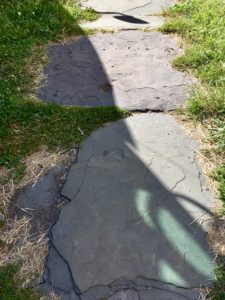The five year anniversary of Superstorm Sandy is this week. With it comes memories of the ways NYC residents came together to help those most affected, especially when city, state and federal agencies failed. Last month, I experienced artists uniting for a related cause. On September 23 I attended “What’s Up with LIC?” a walking tour organized by the Queens Anti-Gentrification Project in collaboration with Long Island City-based artist Priscilla Stadler and part of the 2017 Queens Arts Intervention. It was a very hot day, about a month after Harvey hit Houston and a few days after Maria decimated Puerto Rico — Jose and Irma arrived in the interim. As my group was led around the neighborhood, I learned about “hyper-development”, gazing at massive residential buildings in process while artists expressed their experiences of displacement. I also heard about plans by the city for another huge development near the waterfront instead of a park that would be more ecologically sound in the event of another superstorm like Sandy. I signed a petition for this park to be considered by the Mayor, the Borough President, and other city officials, which you can find here.
At the end of the walk we were asked for our creative response. I took a photo and wrote a poem:

